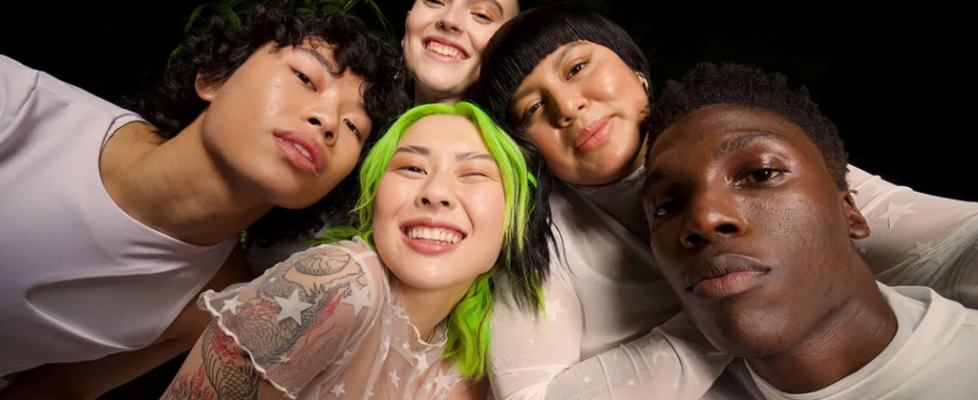People
The Gen Z generation is presently known as the youngest adult generation. Superficially, they are mostly perceived as people with an affinity for technology, growing up in a digital environment. (Bewicke, H, 2023) Thus far, with the most extensive access to education, Gen Z is simultaneously becoming the most informed consumers on the market. They become the designers of the actual product trends. Therefore, brands are forced to introduce mechanisms attracting Gen Z consumers, initiating the inquiry: What characteristics should such a brand have to succeed?
The first major point is marketing through social media to receive the most comprehensive recognition: adapting business strategies by promoting brands through websites and popular apps such as Instagram, TikTok, Facebook or Twitter. Moreover, engaging and investing in influencers is vital to achieving desirable brand acknowledgement. (Chrimes, C. and Boardman, R., 2023)
Secondly, due to broader access to education, Gen Z generations will pay more attention if the products are made ethically, cruelty-free and biodegradable. They are becoming the main drivers for eco-friendly brands, and these will gain the most profit and popularity in the future.
Furthermore, the brand’s authenticity and inclusivity should be visible. Nowadays, a modern approach to product marketing is endorsed. Globalization has contributed to varied communities; hence, people of different colours and preferences are in a market. Natural-looking people instead of supermodels in advertising are essential, whereas diversity management gives Gen Z more insight into the product. (Noble, S.M., Haytko, D.L. and Phillips, J, 2009)
Rihanna’s brand “Fenty” successfully applied this strategy by saying, “We do not believe in division. We do not believe in excluding anyone.” A vast range of sizes introduced received tremendous positive feedback. Despite showing models wearing “Fenty” lingerie – bras varying from 30A to 46DDD and XS to 4X in underwear, she also responded to diversity in skin colour by introducing 40 shades of foundation using models from various ethnicities. She started featuring older women in her lingerie advertising or making people of different orientations participate in a show. In the end, the brand became beneficial for both Rihanna, earning annually, as reported by Forbes, $2.8 billion, and for people who struggled with being included and understood. (McKinnon, T, 2021)
Fenty showed the vital people skills needed for a fashion brand to be successful. Understanding the field is crucial. Rihanna acknowledged every person in her brand because today’s epoch strives for understanding and inclusivity for all. With her excellent communication skills, she performed remarkable marketing strategies, understanding consumer behaviour and brand positioning. Creative vision allows the creation of a unique brand aesthetic with a consistent and strong image. Nevertheless, without networking, there will be no success. Communication, vision and understanding of the field are the critical elements for any brand to be prosperous. (Schuler, R.S, 1992)
Bibliography:
Bewicke, H. (2023). Gen Z consumer behavior: What you need to know. [online] Talon.One. Available at: https://www.talon.one/blog/gen-z-consumer-behavior-what-you-need-to-know.
Chrimes, C. and Boardman, R. (2023). The Opportunities & Challenges of the Metaverse for Fashion Brands. Springer texts in business and economics, pp.389–410. doi:https://doi.org/10.1007/978-3-031-33302-6_20.
McKinnon, T. (2021). How Rihanna’s Fenty Brand is Leading in Diversity & Inclusion. [online] Indigo9 Digital Inc. Available at: https://www.indigo9digital.com/blog/fentydiversityinclusion.
Noble, S.M., Haytko, D.L. and Phillips, J. (2009). What drives college-age Generation Y consumers? Journal of Business Research, 62(6), pp.617–628. doi:https://doi.org/10.1016/j.jbusres.2008.01.020.
Schuler, R.S. (1992). Strategic human resources management: Linking the people with the strategic needs of the business. Organizational Dynamics, [online] 21(1), pp.18–32. doi:https://doi.org/10.1016/0090-2616(92)90083-y.
